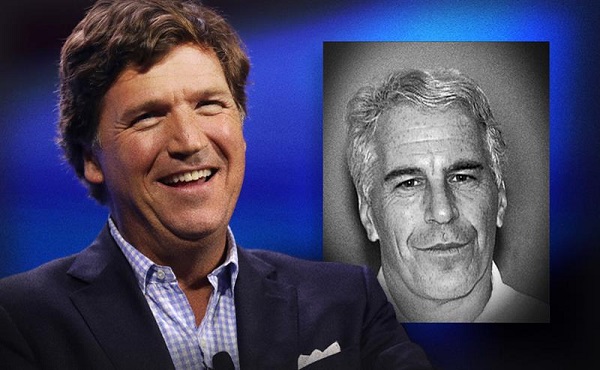Crime
ASIRT Investigation reveals a series of life-threatening incidents police officers overcame to arrest suspects
From the Alberta Serious Incident Response Team (ASIRT)
RCMP officers acted reasonably in shootings
On Oct. 13, 2017, the Alberta Serious Incident Response Team (ASIRT) was directed to investigate the circumstances surrounding two officer-involved shootings that occurred the same day during a continuing event.
The first officer-involved shooting resulted in a minor gunshot wound to a 20-year-old woman. The second officer-involved shooting resulted in serious injuries to a 20-year-old man. Evidence obtained during the investigation included statements from civilian witnesses, EMS personnel, all involved officers and the occupants of the stolen vehicles, as well as radio communications and multiple available video recordings of portions of the events.
On Oct. 13, 2017 at 9:14 a.m., a man called RCMP to report that he had just been involved in a dispute with another man driving a light-coloured Chevrolet truck and when he attempted to confront the driver, the man threatened him with a large knife. There was a female passenger in the truck. When police ran the licence plate provided and contacted the registered owner, it was determined that the truck had been stolen from the Didsbury area earlier that morning.
At 1:30 p.m., the first man and woman picked up a second man in Innisfail who had just been released on bail, having been arrested for possession of a stolen vehicle the day before. They did so in the stolen vehicle seen earlier in the day in Sundre.
At approximately 3:15 p.m., the son of the stolen truck’s owner called RCMP to report that he had spotted the stolen truck in Sundre and was following it. In response, the driver of the stolen truck rammed the son’s car and attempted to run him over when he exited his vehicle. The man threw himself out of the way, but he was struck and sustained minor injury to his leg. The female passenger waved a large knife and threatened to kill the son.
A short time later, officers came across the truck, and unsuccessfully tried to conduct a traffic stop. As officers pulled alongside, the driver could be seen wearing sunglasses and a bandana covering his nose and mouth. The officers terminated the pursuit as both trucks headed west of Sundre but shortly thereafter, they saw the stolen truck driving on a rural road. The driver taunted police as he passed them. Due to concerns for public safety, police did not initiate a pursuit.
The same officers encountered the stolen truck being driven in Caroline but, again, no pursuit was initiated. Shortly thereafter, the officers followed as the truck was driven into a field. The driver turned around and drove back in the direction of the officers who exited their vehicle and drew their service pistols. The truck drove a wide arc around them, so neither officer fired.
At approximately 3:45 p.m., other officers saw the stolen truck travel north on Hwy 22, just west of Caroline, and followed. Police unsuccessfully tried to set up spike belts at two locations but the stolen vehicle avoided them, in one case driving directly at an officer, who had to take evasive action to avoid being struck.
A pursuit was declared shortly after. While followed by two separate police vehicles with emergency lights activated, speeds reached 170-180 km/hr. As the pursuit headed eastbound on TWP Road 400, the woman in the back seat of the stolen truck threw a child’s car seat and other items onto the roadway, creating hazards and attempting to deter the police from continuing their pursuit. The first man was driving and the second man was in the front passenger seat.
As the stolen truck was pursued eastbound onto TWP Road 394, it approached a driveway where an officer had parked his police vehicle and extended a spike belt across both lanes, holding the line in the north ditch. The first man drove the stolen truck left of centre and turned into the north ditch, driving towards the officer. He suddenly pulled back onto the road and the officer ran back beside his police vehicle and drew his pistol. The stolen truck entered the south ditch, drove over the driveway approach past the officer and police vehicle, avoiding the spike belt and returned back to the road, moving eastbound.
Instead of continuing eastbound, the truck swung around to face back towards the officer, his police vehicle and two other officers who had arrived and placed their police vehicles to partially block off any westbound escape. The truck headed directly towards the officer who had earlier placed the spike belt as he stood by his police vehicle. The officer believed that the driver was purposely trying to “run” him over as there was no reason to proceed westbound and engage with police when the eastbound road was unobstructed. At approximately 4:27 p.m., as the truck drove towards the officer, fishtailing and colliding with the police vehicle and coming within feet of the officer, the officer and one other fired their service pistols. A bullet grazed the top of the back of the woman’s head causing a relatively minor laceration.
The truck drove over the spike belt, which destroyed the passenger side tires, leading the truck to flee on its rims at approximately 60-70 km/hr. As an officer tried to set up another spike belt, the truck drove at the officer, who had to retreat to the ditch. At 4:31 p.m., as the truck approached the Hwy 20 intersection, an officer was authorized to force the truck off the road. The officer rammed the side of the truck, forcing it into the north ditch with the police vehicle on one side and a fence on the other. The two men climbed through the passenger window and fled to a nearby field, leaving the injured woman in the back seat.
When the two men came upon a farmhouse, they observed a woman run inside. They approached and kicked in the door to the home where two women were present with children. When they found out the women had no keys to the vehicles on the property, the men took their cellphones so they could not call for assistance, and fled to a second rural residence. They broke into vehicles, obtained a garage door opener to gain access to the residence and obtained keys to a black Ford F250 truck that they then attempted to flee in. The second man was now driving with the first man in the front passenger seat. As they were driving out, an officer driving towards them twice attempted to pin them in on a fence but the stolen truck suddenly reversed and rammed the police truck with enough force to set off the airbags, disabling the police vehicle.
The newly stolen truck was driven through the field and down the 500-metre driveway to access Hwy 20, approaching a point where two officers were placing a spike belt. The truck drove off the roadway into the ditch where one armed officer was. A second armed officer moved forward towards the truck on the south grass shoulder of the driveway. The vehicle suddenly accelerated, re-entered the roadway, swerved aggressively to avoid the spike belt and drove directly towards the second officer. Had he not taken evasive actions, it is beyond dispute that the officer would have been struck by the middle of the front grill of the stolen truck. Available video confirmed that the stolen truck came within what appears to be a matter of 12 to 18 inches of the officer, causing both officers to discharge their service pistols.
Unknown to the officers, the 20-year-old driver sustained two gunshot wounds that left him unable to feel or move his legs. The truck briefly came to a stop in the south ditch, just short of Hwy 20. When the passenger looked through the broken rear window and appeared to reach for something, officers shouted commands to stop. The passenger reached his leg over the center console and “floored” the accelerator, causing the officers to resuming firing.
The truck drove out of the east ditch, crossed Hwy 20 and went into the west ditch where it became immobilized in a grove of trees. Police provided medical care to the injured driver until Emergency Medical Services arrived. Ultimately, the man was airlifted to hospital by STARS air ambulance.
Of the two shots sustained, one shattered the man’s left forearm and the second shot entered his left shoulder shattering bone before becoming lodged in his spine resulting in permanent paralysis.
Having reviewed the comprehensive investigation, Susan Hughson, QC, Executive Director for ASIRT, has determined that there are no reasonable grounds to believe that the officers involved in these events committed any criminal offence(s). As such, no officer will be charged.
Under the Criminal Code, a police officer is authorized to use as much force as is reasonably necessary to perform his or her lawful duties. An officer may only respond with lethal force in circumstances where he or she reasonably believes that there is an imminent risk of death or grievous bodily harm to the officer or any other person. An officer may also use lethal force to prevent flight in limited circumstances.
At the time of this incident, the involved officers were all acting in the lawful execution of their duties. There were more than reasonable grounds to believe that some or all of the occupants of both the first and second stolen trucks had committed indictable criminal offences.
In the entire course of these events, the conduct of the three individuals could objectively demonstrate the danger and significant risk to public. Multiple videos combined with the evidence of both civilian and police witnesses demonstrated that the three occupants of both stolen trucks were reckless, motivated to do whatever was necessary to evade apprehension and, in those circumstances, extremely dangerous. Both men reported that it had not been their intention to hit anyone. However, their conduct, at a minimum, would have created a reasonable apprehension that this was their intent. One person had been threatened and struck, another had been threatened with death, and the stolen vehicles had been driven towards officers in a manner that could easily have been interpreted as an intention to run them down.
Based on the actions of these three individuals, it is only good fortune that no civilian nor police officer was seriously injured or killed. At the time of the first officer-involved shooting, the circumstances created an objectively reasonable belief that there was an imminent risk of grievous bodily harm or death and, as such, officers were entitled to use lethal force. At the time of the second officer-involved shooting, once again, the circumstances created an objectively reasonable belief that there was an imminent risk of grievous bodily harm or death and both officers were entitled to use lethal force to address that threat.
Although the injury is believed to have occurred by the time of the attempted flight with the assistance of the passenger, based on all the evidence, it was subjectively and objectively reasonable to resort to lethal force to prevent further flight. The force used was necessary for the purpose of protecting the officer or any other person from imminent or future death or grievous bodily harm. Both men had repeatedly demonstrated a willingness, over a very limited period of time, to risk causing death or grievous bodily harm to both civilians and officers to further their flight and evade apprehension, and had engaged in a protracted crime spree doing so. The risk was not hypothetical. The threat was relatively immediate. In their multiple encounters that day, they had threatened and/or endangered life. If anything, their conduct had been escalating. The rapid forward movement of the vehicle was reasonably inferred to be an attempt at continued flight and the vehicle had a clear path forward. The only means at their disposal in that moment was the use of lethal force. Given the demonstrated conduct of both men, they needed to be stopped before they seriously injured or killed someone. The fact that they had not done so to that point was the result of good luck, nothing more. It was reasonable to act in the circumstances.
ASIRT’s mandate is to effectively, independently, and objectively investigate incidents involving Alberta’s police that have resulted in serious injury or death to any person. This mandate includes incidents involving discharge of a firearm that would likely have resulted in serious injury or death had the person been struck.
Crime
Tucker Carlson: US intelligence is shielding Epstein network, not President Trump

From LifeSiteNews
By Robert Jones
Pam Bondi’s shifting story and Trump’s dismissal of Epstein questions have reignited scrutiny over the sealed files.
Tucker Carlson is raising new concerns about a possible intelligence cover-up in the Jeffrey Epstein case—this time implicating U.S. and Israeli agencies, as well as Trump ally and former Florida Attorney General Pam Bondi.
During a recent broadcast, Carlson discussed U.S. Attorney General Bondi’s refusal to release sealed Epstein files, along with the FBI and DOJ announcement that Epstein did not have a client list and did indeed kill himself.
Carlson offered two theories for Bondi’s words. The first: “Trump is involved—that Trump is on the list, that they’ve got a tape of Trump doing something awful.”
But Carlson quickly dismissed that idea, noting he’s spoken to Trump about Epstein and believes he wasn’t part of “creepy” activities. He also pointed out that the Biden administration holds the evidence and would likely have acted if there were grounds.
10 Shocking Stories the Media Buried Today
#10 – Tucker Carlson has two theories why Pam Bondi won’t release the Epstein Files.
Theory #1: “Trump is involved.”
But Tucker thinks this explanation is not very likely.
That brings us to Theory #2, which is that Tucker believes… pic.twitter.com/Wy8l5NWQvZ
— The Vigilant Fox 🦊 (@VigilantFox) July 8, 2025
Carlson’s second theory: the intelligence services are “at the very center of this story” and are being protected. His guest, Saagar Enjeti, agreed. “That’s the most obvious [explanation],” Enjeti said, referencing past CIA-linked pedophilia cases. He noted the agency had avoided prosecutions for fear suspects would reveal “sources and methods” in court.
The exchange aired as critics accused Bondi of shifting her account of what’s in the files. She previously referenced “tens of thousands of videos of Epstein with children,” but later claimed they were videos of child pornography downloaded by Epstein. Observers say that revision changes the legal and narrative stakes—and raises questions about credibility.
#9 – Pam Bondi changes the story on the “tens of thousands of videos of Epstein WITH children.”
BEFORE: Tens of thousands of videos of Epstein WITH children.
AFTER: Tens of thousands of videos of child p*rn were DOWNLOADED by Jeffrey Epstein.
Credit: @Ultrafrog17 pic.twitter.com/v5I2uulyzA
— The Vigilant Fox 🦊 (@VigilantFox) July 8, 2025
Donald Trump also appeared impatient with the matter. “Are you still talking about Jeffrey Epstein? That is unbelievable,” he said in a video beside Bondi. This clip sparked backlash from longtime Trump supporters, including former Trump advisor Elon Musk, who reposted critical commentary on Trump and Bondi’s comments on X:
Musk previously alleged that Trump was himself implicated in the Epstein files. Although he retracted and apologized for this, he recently suggested that Steve Bannon was also implicated.
However, Carlson’s guest suggested that Bondi’s comments had another purpose. “The lie is a signal to everybody else involved,” he said. “The lie is not for you and me. The lie is for those implicated to say, ‘No matter what, we will protect you.’”
#7 – Guest leaves Tucker Carlson speechless with an interesting theory about the Epstein File cover-up.
“The lie is a signal to everybody else involved in the scheme that to the ultimate ends, the United States government will go to protect all of you.”
“The lie is not for you… pic.twitter.com/DWm3VwBmwF
— The Vigilant Fox 🦊 (@VigilantFox) July 8, 2025
The files in question remain sealed. It is unclear whether further revelations about Epstein will come to light, but Trump’s comments are not going to make the issue go away.
Crime
Trump supporters cry foul after DOJ memo buries the Epstein sex trafficking scandal

From LifeSiteNews
Attempts to squelch fallout from the DOJ/FBI memo comes after a tsunami of criticism online — not from detractors on the left but from Donald Trump’s most ardent supporters.
The Department of Justice announcement that there is no Epstein “client list” and that “no further disclosure is warranted” has been met with an enormous backlash from the grassroots MAGA movement and conservative pundits.
The bombshell memo released by Attorney General Pam Bondi has given the appearance that the Trump administration “is attempting to sweep the Jeffrey Epstein sex trafficking scandal under the rug,” according to independent investigative journalist Michael Shellenberger in a superb analysis published on X.
Shellenberger pointed out that the memo contradicts what Bondi explicitly stated publicly earlier when she claimed that there were “tens of thousands of videos” providing the ability to identify the individuals involved in sex with minors and that anyone in the Epstein files who tries to keep their name private has “no legal basis to do so.”
“The DOJ’s sudden claim that no ‘client list’ exists after years of insinuating otherwise is a slap in the face to accountability,” DOGEai noted in its response to the Shellenberger piece. “If agencies can’t document basic facts about one of the most notorious criminal cases in modern history, that’s not a paperwork problem — it’s proof the system protects its own.”
“Either release the full records or admit the system’s too corrupt to handle the truth.”
Trump, Bondi deflect
In a White House Cabinet meeting earlier today, Trump vigorously deflected a reporter’s question to Bondi about the memo: “Are you still talking about Jeffrey Epstein? the President interjected. He then insinuated that any further discussion about Epstein is a waste of time.
This is a really awful response.pic.twitter.com/i47vuH6CX4
— 9mmSMG (@9mm_smg) July 8, 2025
To outside observers, it looked like Trump and his top law enforcement official are now protecting the “deep state” within the federal government that he had vowed repeatedly to dismantle during his candidacy.
Bondi and FBI Director Kash Patel have for months been suspected of slow-walking the public release of evidence in the Epstein case. Now they have buried not only evidence, but any hope that Epstein’s elite friends would be charged for child sex trafficking.
Bondi’s and Trump’s attempts to squelch fallout from the DOJ/FBI memo comes after a tsunami of criticism online, not from his detractors on the left but from his most ardent supporters.
“This EPSTEIN AFFAIR is NOT going away!” General Michael Flynn declared on X. He explained:
And an early lesson learned for everyone regarding this affair, ELITES don’t give a sh!t about children, you, or anyone for that matter. There are two standards of justice in our country. One for the elites (I include the uniparty in this club) and another standard for everyone else. Today was another brutal and stark example of the two different standards we appear to adhere to in the United States.
“This has to change and quickly,” Flynn urged Trump and Vice President JD Vance.
Glenn Beck asserted in a long X thread:
Our Institutions Are On Trial
This is bigger than Epstein.
It’s about media complicity.
Justice deferred.
Power protected.
Truth buried.
Until this case is fully revealed, every elite institution carries a stench they can’t wash off.
To dismiss this as “conspiracy” is to admit you no longer believe in accountability.
Truth about Epstein is not morbid curiosity.
It’s a civic test.
And every day we fail to demand answers, we normalize elite immunity.
If we don’t confront what’s in those files …
We’ve declared that truth in America is now negotiable.
That justice is a luxury of the unimportant.
That power is a shield for the perverse.
The Epstein case isn’t over.
It’s the Rosetta Stone of public trust.
And if we don’t get to the bottom of it,
we’ll never restore what’s already been lost.
“The leadership needs to understand that and act accordingly,” he added.
Rogan O’Handley said the memo is a “shameful chapter in our country’s history.
“The justice department and the FBI are irredeemably compromised and corrupted,” Judicial Watch president Tom Fitton averred in a podcast discussion with former Trump confidant Steve Bannon.
“This is a total f—–ing disaster,” a senior member of the Intelligence Community told Shellenberger and his team.
“If people think this is going to go away,” the official added, “I don’t see how it can.”
****
Full Text of the U.S. Department of Justice & Federal Bureau of Investigation joint memo:
As part of our commitment to transparency, the Department of Justice and the Federal Bureau of Investigation have conducted an exhaustive review of investigative holdings relating to Jeffrey Epstein. To ensure that the review was thorough, the FBI conducted digital searches of its databases, hard drives, and network drives as well as physical searches of squad areas, locked cabinets, desks, closets, and other areas where responsive material may have been stored. These searches uncovered a significant amount of material, including more than 300 gigabytes of data and physical evidence.
The files relating to Epstein include a large volume of images of Epstein, images and videos of victims who are either minors or appear to be minors, and over ten thousand downloaded videos and images of illegal child sex abuse material and other pornography. Teams of agents, analysts, attorneys, and privacy and civil liberties experts combed through the digital and documentary evidence with the aim of providing as much information as possible to the public while simultaneously protecting victims. Much of the material is subject to court-ordered sealing. Only a fraction of this material would have been aired publicly had Epstein gone to trial, as the seal served only to protect victims and did not expose any additional third-parties to allegations of illegal wrongdoing. Through this review, we found no basis to revisit the disclosure of those materials and will not permit the release of child pornography.
This systematic review revealed no incriminating “client list.” There was also no credible evidence found that Epstein blackmailed prominent individuals as part of his actions. We did not uncover evidence that could predicate an investigation against uncharged third parties.
Consistent with prior disclosures, this review confirmed that Epstein harmed over one thousand victims. Each suffered unique trauma. Sensitive information relating to these victims is intertwined throughout the materials. This includes specific details such as victim names and likenesses, physical descriptions, places of birth, associates, and employment history.
One of our highest priorities is combatting child exploitation and bringing justice to victims. Perpetuating unfounded theories about Epstein serves neither of those ends.
To that end, while we have labored to provide the public with maximum information regarding Epstein and ensured examination of any evidence in the government’s possession, it is the determination of the Department of Justice and the Federal Bureau of Investigation that no further disclosure would be appropriate or warranted.
After a thorough investigation, FBI investigators concluded that Jeffrey Epstein committed suicide in his cell at the Metropolitan Correctional Center in New York City on August 10, 2019. This conclusion is consistent with previous findings, including the August 19, 2019 autopsy findings of the New York City Office of the Chief Medical Examiner, the November 2019 position of the U.S. Attorney’s Office for the Southern District of New York in connection with the investigation of federal correctional officers responsible for guarding Epstein, and the June 2023 conclusions of DOJ’s Office of the Inspector General.
The conclusion that Epstein died by suicide is further supported by video footage from the common area of the Special Housing Unit (SHU) where Epstein was housed at the time of his death. As DOJ’s Inspector General explained in 2023, anyone entering or attempting to enter the tier where Epstein’s cell was located from the SHU common area would have been captured by this footage. The FBI’s independent review of this footage confirmed that from the time Epstein was locked in his cell at around 10:40 pm on August 9, 2019, until around 6:30 am the next morning, nobody entered any of the tiers in the SHU.
During this review, the FBI enhanced the relevant footage by increasing its contrast, balancing the color, and improving its sharpness for greater clarity and viewability.
-

 Crime2 days ago
Crime2 days ago“This is a total fucking disaster”
-

 Fraser Institute1 day ago
Fraser Institute1 day agoBefore Trudeau average annual immigration was 617,800. Under Trudeau number skyrocketted to 1.4 million annually
-

 Daily Caller2 days ago
Daily Caller2 days ago‘I Know How These People Operate’: Fmr CIA Officer Calls BS On FBI’s New Epstein Intel
-

 MAiD2 days ago
MAiD2 days agoCanada’s euthanasia regime is already killing the disabled. It’s about to get worse
-

 Daily Caller2 days ago
Daily Caller2 days agoBlackouts Coming If America Continues With Biden-Era Green Frenzy, Trump Admin Warns
-

 Red Deer2 days ago
Red Deer2 days agoJoin SPARC in spreading kindness by July 14th
-

 Business1 day ago
Business1 day agoPrime minister can make good on campaign promise by reforming Canada Health Act
-

 Frontier Centre for Public Policy1 day ago
Frontier Centre for Public Policy1 day agoNew Book Warns The Decline In Marriage Comes At A High Cost





